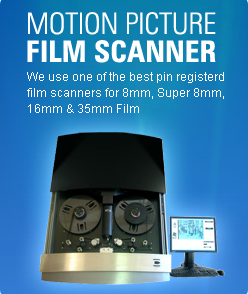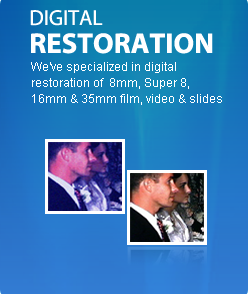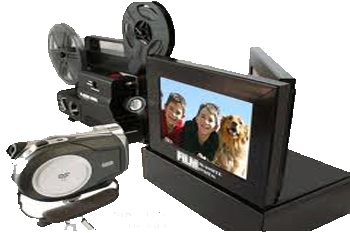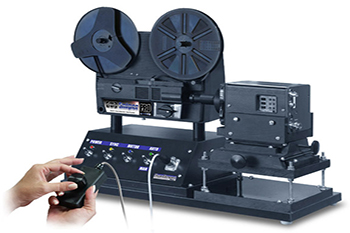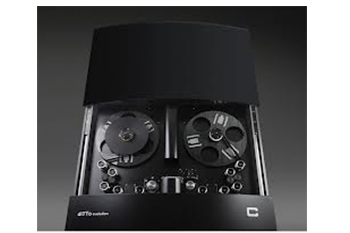
Film Conversion Equipment
Film Scanning and Film Transfer Equipment Types
The type of film scanning machine used for your 8mm, Super 8 or 16mm film conversion will have as much of an impact on the quality you receive as the resolution of the scan itself will. For example, if you wanted to digitize a photograph and tried doing it two different ways. You first put the photograph down on a table and took a picture of it using your smart phone or camera. Then you took the picture and scanned it using a flatbed scanner. If you compare the two side by side on your computer it will become really obvious that the flatbed scanner produced a digital image as good as the photograph. However, the picture you took with your phone or camera does not look close to the quality of the original photograph.
The same goes for scanning your 8mm, Super 8 or 16mm film. The real-time and frame by frame machines below are using a camcorder to take a picture of your film. The motion picture film scanner and Datacine machine are scanning the film. The results will be significantly different.
Film Conversion Equipment |
|
Real Time
|
|
Frame by Frame
|
|
Professional Film Scanners
|
|
So, at this point you’ve learned that film transfers can capture at standard definition (480 lines), high definition (1080 lines) or 2K (1556 lines). You’ve also learned about the 3 different types of film transfers being used today. In order from least to best quality we have:
Gresham Fun Facts: The residents could not establish the city until they had a post office and a postal code. To help his community, one of the local store owners allowed his store to serve as the post office in 1884. Gresham was incorporated in 1905. The municipality was named in tribute to Postmaster General Walter Quinton Gresham.
Oregon Fun Facts: and British territory was formally established at the 49th parallel – the part of the territory that was given to Britain would ultimately become part of Canada. Oregon was officially admitted to the union as a state on February 14th, 1859. Today, Portland, Oregon’s largest city, is considered one of the top cities in the nation in terms of quality of life, and the state is also known as one of the nation’s top producers of wine, boasting over 300 wineries. Following exploration by the Spanish and French, in the 17th and 18th centuries, Oregon was mapped by the Lewis and Clark expedition in their search for the Northwest Passage.
